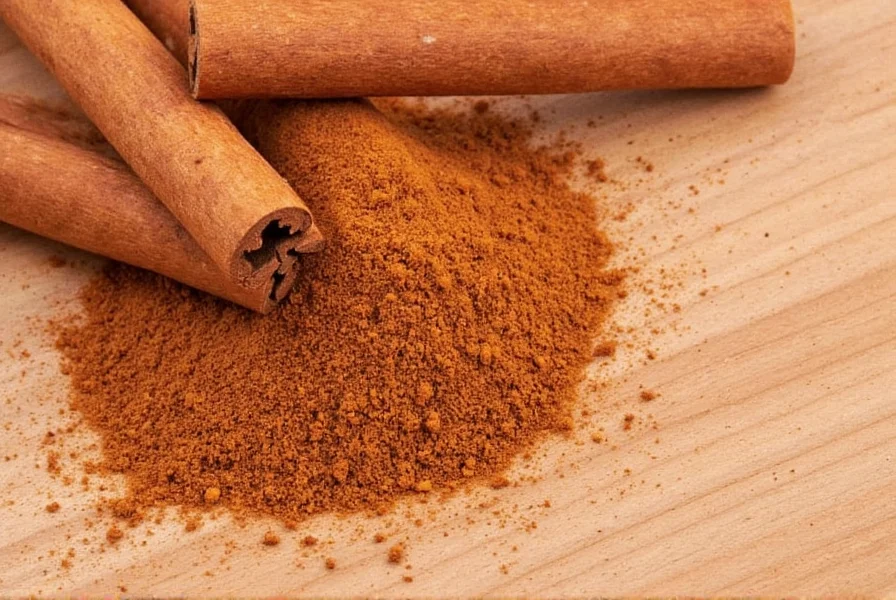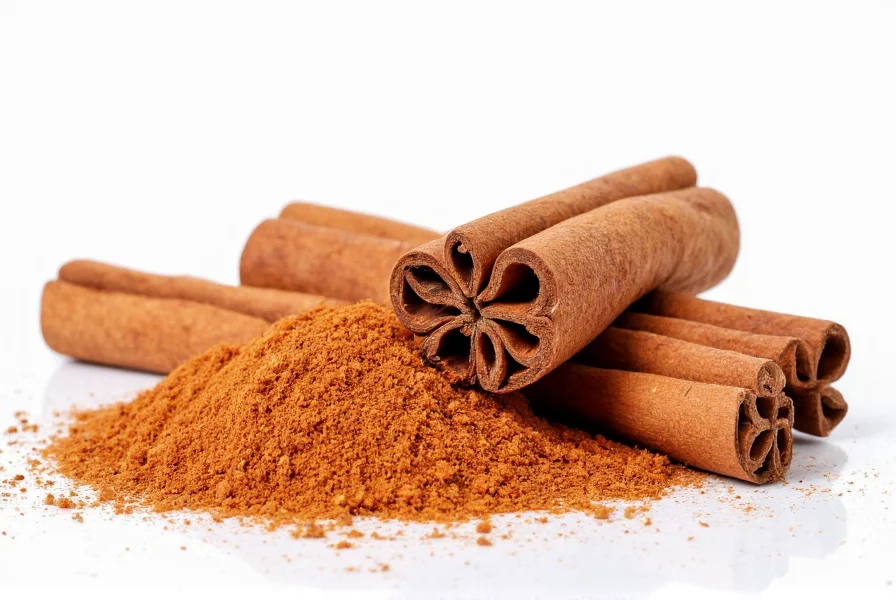Understanding Cinnamon's Nutritional Powerhouse Profile
For centuries, cinnamon has been prized not just for its distinctive flavor but for its impressive nutritional composition. This aromatic spice, derived from the inner bark of Cinnamomum trees, contains a remarkable concentration of beneficial compounds that contribute to its status as one of nature's most potent functional foods. Modern nutritional analysis reveals that even small amounts of cinnamon deliver significant micronutrients and bioactive compounds that support various aspects of human health.
Comprehensive Nutrient Breakdown of Cinnamon
When examining the detailed nutritional profile of cinnamon, two primary varieties dominate the market: Ceylon cinnamon (Cinnamomum verum) and Cassia cinnamon (Cinnamomum cassia). While both offer similar nutritional benefits, their compound concentrations differ significantly, particularly regarding coumarin content—a compound that requires attention for regular consumption.
| Nutrient | Per Teaspoon (2.6g) | % Daily Value | Key Health Functions |
|---|---|---|---|
| Calories | 6.4 kcal | 0.3% | Energy provision |
| Total Carbohydrate | 2.1g | 0.7% | Energy metabolism |
| Dietary Fiber | 1.6g | 6% | Digestive health, blood sugar regulation |
| Calcium | 17.5mg | 2% | Bone health, muscle function |
| Manganese | 0.2mg | 8% | Antioxidant enzyme production, bone development |
| Iron | 0.4mg | 2% | Oxygen transport, energy production |
| Vitamin K | 0.6mcg | 1% | Blood clotting, bone metabolism |
Key Bioactive Compounds in Cinnamon
Beyond basic nutrients, cinnamon's true value lies in its rich array of bioactive compounds. The most prominent is cinnamaldehyde (50-90% of essential oil), responsible for cinnamon's distinctive flavor and aroma while demonstrating significant anti-inflammatory and antimicrobial properties. Cinnamon also contains substantial amounts of:
- Polyphenol antioxidants - Among the highest of all spices, with ORAC value of 267,536 μmol TE/100g
- Proanthocyanidins - Tannin-type antioxidants that may improve vascular function
- Eugenol - Particularly in Ceylon variety, with analgesic and antiseptic properties
- Linalool - Contributes to anti-anxiety effects observed in some studies

Ceylon vs. Cassia: Nutritional Differences That Matter
Understanding the nutritional differences between Ceylon and Cassia cinnamon is crucial for regular consumers. While Cassia (the more common and less expensive variety) contains approximately 1,000 times more coumarin than Ceylon cinnamon, both varieties offer similar micronutrient profiles. Coumarin, while possessing some potential health benefits, can cause liver toxicity in sensitive individuals when consumed in large amounts over time.
Nutrition researchers recommend that regular cinnamon consumers—particularly those using it for potential health benefits—opt for Ceylon variety when consuming more than 1 teaspoon daily. For occasional culinary use, Cassia remains a nutritionally valuable option with its slightly higher manganese content.
Health Implications of Cinnamon's Nutrient Profile
The specific combination of nutrients and bioactive compounds in cinnamon contributes to several evidence-supported health benefits. Clinical studies have demonstrated that cinnamon's nutrients may:
- Support healthy blood sugar metabolism through multiple mechanisms, including improved insulin sensitivity
- Contribute to cardiovascular health by reducing oxidative stress markers
- Provide anti-inflammatory effects that may benefit individuals with chronic inflammatory conditions
- Support cognitive function through antioxidant protection of neural tissues
It's important to note that while research on cinnamon's health benefits is promising, most studies use concentrated extracts rather than culinary amounts. The nutrient density of cinnamon means that even small culinary portions contribute meaningfully to daily antioxidant intake.
Practical Incorporation of Cinnamon for Nutritional Benefits
To maximize the nutritional benefits of cinnamon while minimizing potential risks, consider these evidence-based recommendations:
- Use 1/2 to 1 teaspoon of Ceylon cinnamon daily for regular consumption
- Add cinnamon to morning beverages like coffee or tea to enhance antioxidant intake
- Combine with black pepper to potentially increase nutrient absorption
- Pair with complex carbohydrates to help moderate blood sugar response
- Store in a cool, dark place to preserve volatile compounds and nutrient integrity

Safety Considerations and Appropriate Consumption
While cinnamon's nutrient profile offers numerous benefits, responsible consumption matters. The European Food Safety Authority recommends a tolerable daily intake of coumarin at 0.1 mg per kilogram of body weight. For a 150-pound adult, this translates to approximately 1 teaspoon of Cassia cinnamon or several tablespoons of Ceylon cinnamon daily.
Individuals with liver conditions or those taking medications metabolized by the liver should consult healthcare providers before consuming cinnamon regularly in larger amounts. Those with cinnamon allergies (typically contact dermatitis rather than systemic) should avoid direct skin contact with concentrated forms.
Conclusion: Cinnamon's Role in a Nutrient-Dense Diet
Cinnamon represents a remarkable example of how traditional spices offer significant nutritional value beyond flavor enhancement. Its dense concentration of manganese, fiber, and potent antioxidants makes it a valuable addition to a health-conscious diet. By understanding the specific nutrient composition and differences between varieties, consumers can make informed choices that maximize benefits while minimizing potential concerns. When incorporated thoughtfully into daily eating patterns, cinnamon contributes meaningfully to overall nutrient intake and may support several aspects of long-term health.
Frequently Asked Questions About Cinnamon Nutrition
How much cinnamon should I consume daily for health benefits?
Research suggests 1/2 to 1 teaspoon (1-2 grams) of Ceylon cinnamon daily provides measurable health benefits while staying within safe coumarin limits. For Cassia cinnamon, limit to 1/2 teaspoon daily due to higher coumarin content. Always consult your healthcare provider before using cinnamon therapeutically, especially if you have liver conditions or take medications.
Which type of cinnamon has better nutritional value?
Both Ceylon and Cassia cinnamon offer similar micronutrient profiles, with Cassia containing slightly more manganese. However, Ceylon cinnamon contains significantly less coumarin (about 0.017g per 100g versus 8.95g per 100g in Cassia), making it safer for regular consumption. For daily use, Ceylon provides equivalent nutritional benefits with lower potential risk.
Does cinnamon lose nutrients when cooked?
Cinnamon retains most of its beneficial compounds during cooking, though some volatile oils may diminish with prolonged high-heat exposure. The fiber, minerals, and polyphenol antioxidants remain stable through typical cooking processes. For maximum benefit, add cinnamon toward the end of cooking or use in no-cook applications like smoothies or yogurt. Ground cinnamon maintains nutrient stability for 6-12 months when stored properly in a cool, dark place.
Can cinnamon help with blood sugar control?
Several clinical studies indicate that cinnamon's nutrients, particularly polyphenols and fiber, may support healthy blood sugar metabolism. Research shows that 1-6 grams daily may improve insulin sensitivity and reduce postprandial blood glucose spikes. However, cinnamon should complement—not replace—standard diabetes management approaches. The effect varies between individuals, and Ceylon cinnamon may offer advantages due to its cleaner safety profile for regular consumption.
What are the primary antioxidants in cinnamon and their benefits?
Cinnamon contains exceptionally high levels of polyphenol antioxidants, including cinnamaldehyde (50-90% of essential oil), proanthocyanidins, and epicatechin. These compounds combat oxidative stress by neutralizing free radicals, with an ORAC value of 267,536 μmol TE/100g—among the highest of all spices. Regular consumption may reduce inflammation markers, support cardiovascular health, and protect neural tissues, though most research uses concentrated extracts rather than culinary amounts.











 浙公网安备
33010002000092号
浙公网安备
33010002000092号 浙B2-20120091-4
浙B2-20120091-4